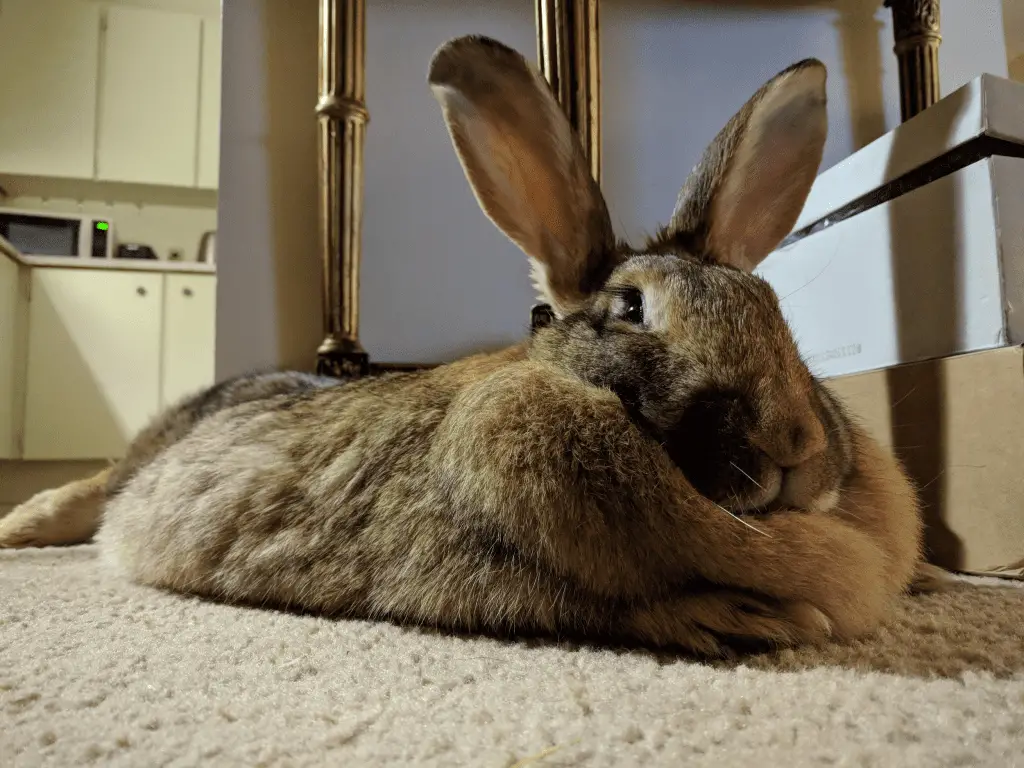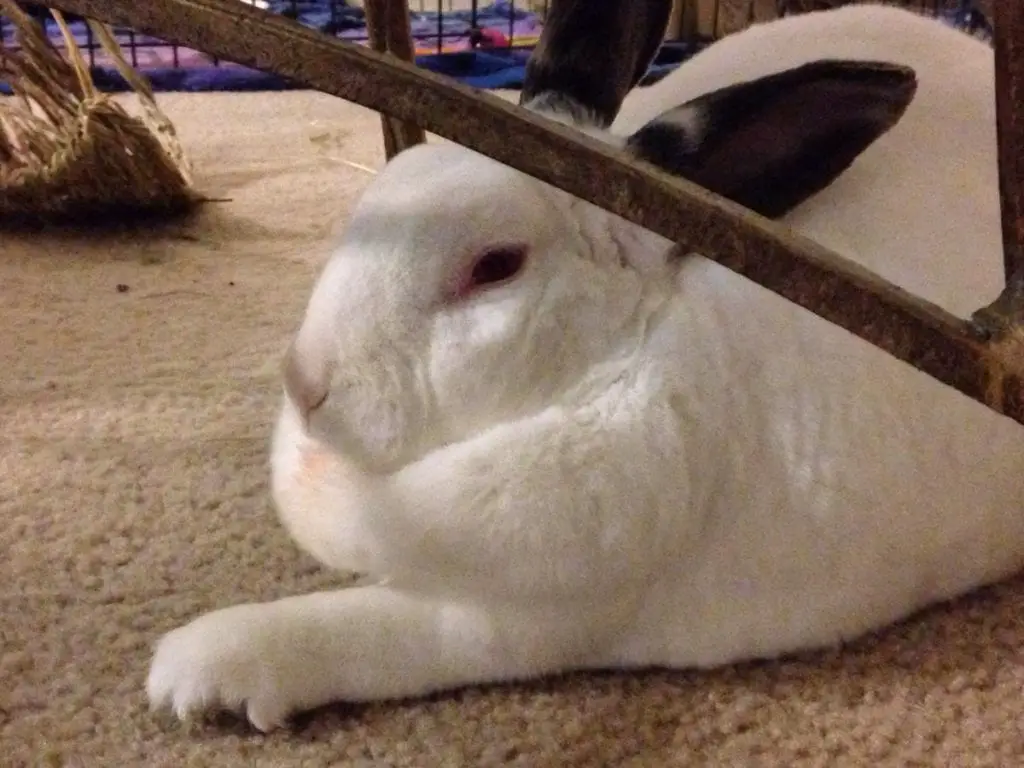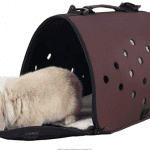As a pet owner, everything your rabbit does means something. Being with your bunny most of the time gives you the idea of how she or he acts, how she/he responds to things, the way he/she eats, the way he/she plays with you, and so on.
Just the same as other pet animals, they have certain gestures. They do such a thing to show you how they love or dislike something. When you are very close to your rabbit, you will learn it from time to time.
One of the cutest parts of your bunny is the dewlap. Just so you know, not all rabbits have this.
What is dewlap?

The dewlap is an extra or additional flap under the rabbit’s chin. It usually comprises of fatty tissue. A dewlap is ordinarily seen in female rabbits. However, it can also be seen in the male rabbits, but a much less percentage. Additionally, male rabbits may have smaller dewlaps compared to the female ones’.
Normally, a dewlap is found in female bunnies once they become sexually developed or mature. This enables the female rabbit to equip themselves for the arrival of their new babies as she stretches out her own hair from her dewlap in order to align their womb.
However, as it is commonly found in female rabbits, dewlaps are less obvious when they are spayed at an early age. This is most particularly for larger rabbit breeds. This includes the Flemish Giant.
Although a dewlap includes some topical fat, it doesn’t inevitably suggest or imply that a particular rabbit is obese or overweight.
What is the reason why rabbits have dewlap?
As discussed earlier, a dewlap typically appears once a female rabbit has attained its sexual development and can eventually start to reproduce.
When a female rabbit is pregnant, it goes through its nesting phase before the arrival of her baby. Throughout its nesting phase, she may pull out or brush her own fur to insulate and align her womb. Its dewlap presents a spot for her to pull out this fur through her nesting stage.
A rabbit’s womb or nest will be her place where she’ll sleep and deliver her baby. It is also where she will raise it. Lining or overlaying it with her fur will make her nest warm. This gesture makes her very comfortable. Not only for her alone but also for her baby.
Different appearances and meaning
There are different things you need to understand the way your rabbit’s dewlap looks. Here are few:
- Large Dewlap

If your rabbit has an unusually large dewlap, this may imply or suggest that he or she is overweight. This will be the time that you should take action and make your rabbit stay on its balanced diet.
If your rabbit is not overweight, having a large dewlap may imply reaching her sexual maturity or development. It can also appear large due to its breed.
Having a greatly large dewlap can lead to various difficulties. If your rabbit becomes obese or overweight, he or she may have trouble grooming her self and, most especially, in eating.
Having a very large dewlap can also cause infections. Normally, infections do develop when debris or bacteria become confined between the dewlap’s fold.
With that said, you’ll have to clean and groom your rabbit’s dewlap more often during its shedding period in order to prevent it from becoming stained, matted, and dirty.
In a worst-case scenario, your veterinarian may advise you on the need for surgery in order to lessen its dewlap’s size.
Grooming your rabbit more often or even daily should further deter problems from happening. However, in other situations, your rabbit may need to be placed on a balanced diet or else; reduction surgery is going to be necessary.
For that reason, the first thing you need to do is to seek a piece of advice from your veterinarian concerning any health matters you have associated with the appearance of your rabbit’s dewlap.
- Wet Dewlap
If your rabbit developed a wet dewlap, which is constant and isn’t completely running dry, it might suggest that your rabbit may have problems associated with its dental health. Typically, this concern may be caused by underlying reasons such as stasis. This condition eventually leads to a wet dewlap and chin.
As saliva is regarded as corrosive or damaging, if neglected on the skin for a lengthened time frame, it can cause soreness and irritation. It can also lead to open wounds on the rabbit’s skin. Over a period of time, this inflammation or soreness can lead to infection—one of the conditions known as moist dermatitis.
One of the visible manifestations of moist dermatitis is when the rabbit’s hair is flopping out of the infected area. One of these areas can be the dewlap. The noticeable infected area or skin will look red, raw, and even sore. The infected area can also turn green over a period of time.
The sores or inflamed parts of the skin, such as dewlap, will then draw flies or other insects that will lay or produce eggs in the same exact infected area. If the infection grows considerably, you will eventually see worms and maggots squirming on the dewlap.
When the problem consequently advances, it can be very difficult to heal and treat. Your veterinarian may prescribe some of the rabbit’s systemic medicines and antibiotics to administer the infection. Various antibiotics are not totally safe for rabbits to use.
An antibiotic powder is one of the examples. This antibiotic is usually advised to be sprinkled on the affected area to deter it from getting more infected. Your veterinarian will also provide some additional guidance and directions on how you can prevent the excess moisture on your rabbit’s dewlap.
When you are presented with the said condition above, as much as possible, make some immediate action at its early stage. Treating an infection during its early stage is typically easy and forgiving.
Your veterinarian will most likely trim or shave the fur from the dewlap in order for the skin to get dry immediately.
Conclusion
A dewlap is typical, and this is, in particular, to female rabbits. However, you should want to be keen enough to make sure that their health isn’t compromised. There are some situations and circumstances that you have to be cautious and mindful of. As much as possible, you should give your lovely bunnies healthy and well-balanced food in order to prevent them from being overweight or obese.
In some circumstances that your rabbit’s dewlap gets wet more frequently, what you need to do is to prevent it and do some preventive measures from further skin diseases. The most effective method to halt moist dermatitis, especially in the dewlap, is to keep the area dry, always.
You can use non-leaky water bottles rather than bowls. You should also trim the hair on the dewlap area where it is usually wet. Then, groom it daily in order to prevent anything from stuck in between the fold, which can further develop an infection.
You should take note that even though rabbits that have a large dewlap seem to appear as overweight, generally, having a dewlap does not certainly mean that they are.


